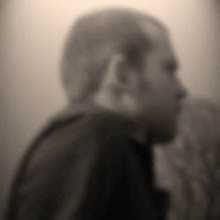You may all be thinking that my design proposal is moving a little slowly, so I thought I should fill you in on the work that is going on in parallel.
Briggate is the main, pedestrianised shopping street in Leeds; if you've ever been shopping in Leeds then you will certainly have been there. The photo below shows a view from the South end looking North.

This street has been the site for our initial design work, which is effectively unrelated to our individual thesis projects. The work has been a combination of group work and individual proposals, and will culminate in around two weeks time. My group has two members - myself and Roger Reeves.
The brief for this project is split into three distinct stages:
Define: This stage is essentially a site analysis, undertaken by seperate tutor groups. For those people unfamilar with the idea, it is the process of gathering information about the site, as diverse, complete and exhaustive as possible, then analysing and presenting that data in a consise way. It is common to concetrate on a small number of key site characteristics once the initial data gathering has been undertaken. In this way, each group will focus on different areas and come up with unique 'definitions' for the area.
Redefine: The brief describes this stage as follows: "Using Briggate as a generator, develop a Narrative addressing defined issues and develop a specific method of approach." We interpreted that to mean all sorts of different things before we finally settled on something we understood. You'll see what we ended up with in a couple of days.
Propose: This stage marks the end of the group work, and we individually propose some sort of 'intervention' that fits within the framework of the group Redefinition. That intervention may be a building, but it could equally be sculptural, landscape, or something completely different. At least, that's what we think so far. This stage is currently ongoing, and I should find out in a couple of weeks whether I've got it completely wrong or not.
I'll post my group's Definition work online tomorrow...
 [photo taken from the Ampleforth Abbey wikipedia article]
[photo taken from the Ampleforth Abbey wikipedia article]











 So our concept of Briggate was now focused its potential to become a 3-dimensional street. By adding activity above and below the current shopping level we are suggesting a complex and layered streetscape, with the potential to become a compeltely unique destination. The Briggate we currently know is redefined as one third of a system that does not yet exist.
So our concept of Briggate was now focused its potential to become a 3-dimensional street. By adding activity above and below the current shopping level we are suggesting a complex and layered streetscape, with the potential to become a compeltely unique destination. The Briggate we currently know is redefined as one third of a system that does not yet exist.































